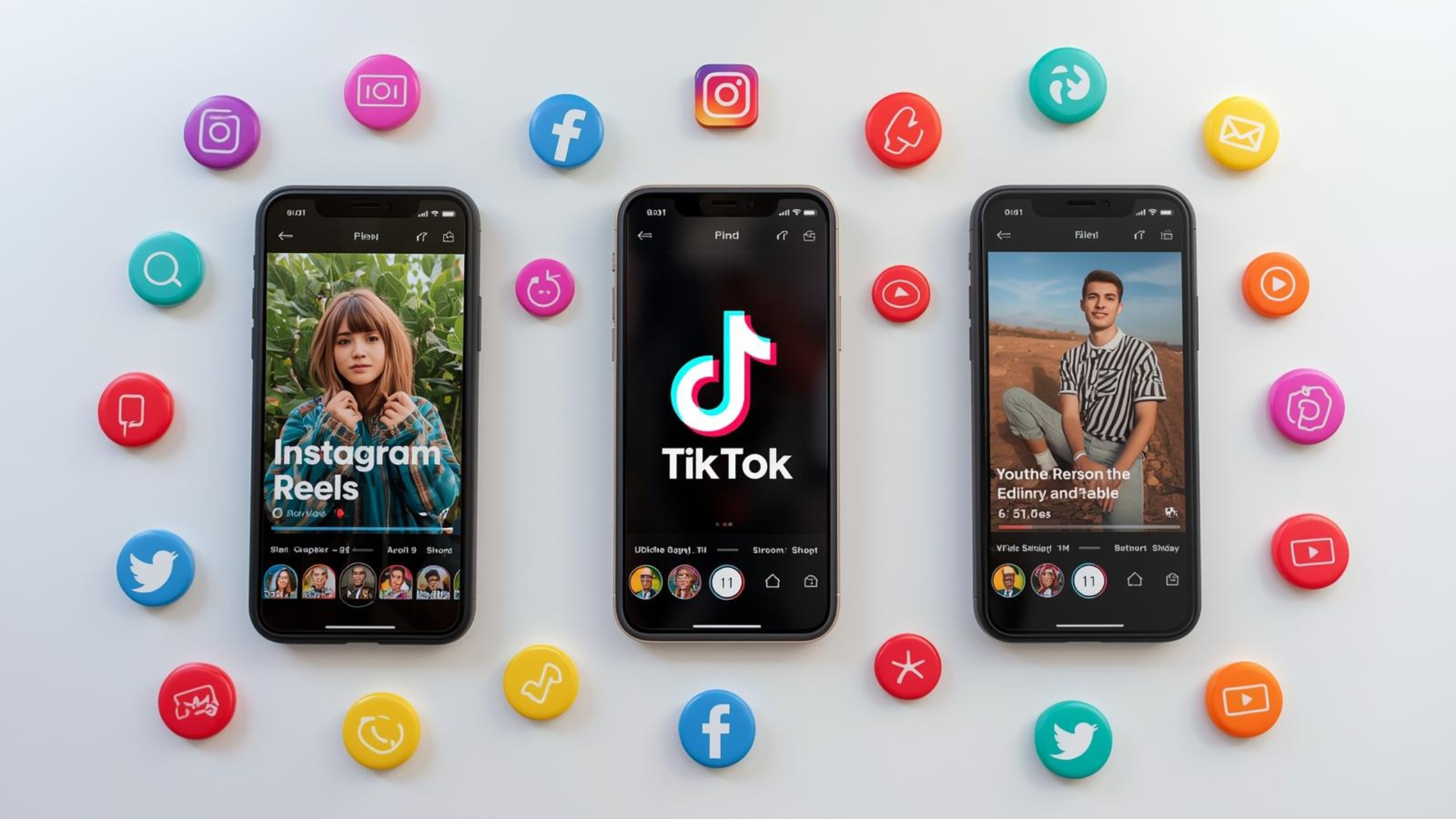Creating Engaging Ads: How Video Editing Drives Better Results
In today’s digital age, creating engaging video ads is one of the most effective ways to capture attention, drive conversions, and grow your brand. But producing a compelling ad involves more than just great visuals and a strong message—it requires expert video editing to tie everything together. How you edit your video ad can make all the difference between a campaign that resonates with your target audience and one that gets lost in the noise.
In this blog, we’ll explore how professional video editing can significantly improve the performance of your video ads and share actionable tips for editing ads that engage, inform, and convert.
1. Why Video Editing Matters for Ads
Effective video ads are concise, engaging, and tailored to their target audience. The editing process is where raw footage is transformed into a cohesive, attention-grabbing narrative that speaks directly to potential customers. With the right editing techniques, you can craft a compelling story, enhance your message, and drive viewers to take action.
Here’s why video editing is crucial for ad success:
• Captures attention quickly: You have mere seconds to capture the attention of viewers. Well-edited ads get to the point quickly and use pacing, music, and visuals to hook the audience from the first frame.
• Enhances storytelling: The structure of your ad—how the story unfolds—largely depends on how it’s edited. The right cuts, transitions, and music can heighten emotional appeal and create a more engaging viewing experience.
• Optimizes for platforms: Different platforms have different video specs and viewer behaviors. Editing allows you to tailor your ad to the platform, ensuring it’s optimized for social media, TV, or web viewing.
2. Hook Viewers in the First Few Seconds
The first few seconds of your video ad are critical. In a world of endless scrolling, viewers need a reason to stop and watch your ad, and that’s where a strong hook comes in. Your editing should create an immediate impact that grabs attention and encourages viewers to keep watching.
Video editing tips for creating a strong hook:
• Start with an eye-catching visual: Open with a bold, dynamic shot that instantly captures attention. This could be a close-up of your product, an engaging scene, or a powerful visual metaphor.
• Use fast-paced cuts: Quick cuts between shots create energy and intrigue, making viewers curious about what comes next.
• Ask a question or present a problem: Use text overlays or voiceovers to ask a question or present a problem that your product or service can solve. This creates immediate relevance for the viewer.
By hooking viewers in the first few seconds, you increase the chances that they’ll stay engaged with your ad and absorb your key messages.
3. Tell a Story Through Editing
Storytelling is the heart of any successful video ad. A well-edited ad tells a clear and compelling story that connects with the audience emotionally, whether that’s through humor, empathy, or excitement.
How to use editing to tell a story:
• Establish a clear structure: A strong video ad should have a beginning, middle, and end. Use editing to establish this structure. Start with the problem or hook, follow with how your product/service solves the problem, and end with a call to action (CTA).
• Use transitions for flow: Smooth transitions between scenes keep the story flowing and maintain viewer engagement. Avoid abrupt cuts that could confuse viewers.
• Emphasize emotional moments: Slow down key emotional moments with editing techniques like slow-motion or zoom-ins to highlight their importance. This helps viewers connect more deeply with the story.
For example, a fitness brand might start its ad by showing the struggles of an average person trying to get in shape, then transition to scenes of the same person succeeding with the help of the brand’s products, and finally end with a strong CTA encouraging viewers to take the next step.
4. Optimize for Short Attention Spans
Modern consumers have shorter attention spans, especially when watching ads on social media. That’s why your video ad needs to deliver your message in the shortest time possible, without losing its impact.
Editing tips to keep ads concise:
• Trim the fat: Eliminate any unnecessary footage or filler content. Every second in your ad should serve a purpose, whether it’s to inform, entertain, or persuade.
• Use dynamic pacing: Keep the pace brisk by cutting between scenes quickly. This not only holds attention but also ensures your message is delivered efficiently.
• Condense complex messages: If your product or service has complex features, simplify your message with text overlays or quick voiceovers to ensure viewers can grasp the key points quickly.
For example, if you’re editing a 15-second social media ad, use only the most compelling visuals and text to make your point clear, and save any detailed explanations for longer formats.
5. Incorporate Text and Graphics for Clarity
Adding text overlays and motion graphics can enhance the effectiveness of your video ad by reinforcing key messages and making your content more visually appealing. These elements are especially important for mobile users who may be watching with the sound off.
How to use text and graphics in video ads:
• Add captions: Ensure that all dialogue or voiceovers are accompanied by captions. Many social media platforms autoplay videos without sound, so captions help convey your message to viewers who aren’t listening.
• Use text callouts: Highlight important information, like product benefits or special offers, with text overlays. This draws attention to key points and ensures viewers retain the most important information.
• Incorporate motion graphics: Use motion graphics to introduce your product, explain features, or create visual transitions. Simple animations can add energy and keep the ad engaging.
At Viral Ideas, we frequently use text overlays and motion graphics to amplify key messages in video ads, ensuring they resonate with viewers no matter how they’re watching.
6. Select the Right Music and Sound Effects
Music and sound effects play a significant role in creating the mood and tone of your ad. Whether it’s upbeat and energetic or calm and reassuring, the right audio can amplify the emotional impact of your video.
Editing tips for using music and sound effects:
• Match the tone of your brand: Choose music that aligns with the tone and message of your brand. An ad for a luxury product might use a slow, elegant track, while a tech startup might prefer something more fast-paced and modern.
• Use sound effects to enhance visuals: Subtle sound effects like whooshes, clicks, or dings can highlight visual transitions or emphasize key moments. However, be careful not to overuse them.
• Adjust audio levels: Make sure the music doesn’t overpower the dialogue or voiceover. Adjust the audio levels to ensure the voice is always clear and easy to understand.
By syncing your visuals with the right audio, you can elevate the emotional experience and make your video ad more memorable.
7. Include a Strong Call to Action (CTA)
An effective video ad should always end with a clear and compelling call to action (CTA). The CTA tells viewers what to do next, whether it’s visiting your website, making a purchase, or signing up for a newsletter.
How to incorporate a CTA in video ads:
• Use on-screen text: Include a text overlay with your CTA to reinforce the message visually. For example, “Shop Now” or “Learn More” should appear on-screen as the video ends.
• End with a clickable CTA: For platforms like YouTube or Facebook, include clickable CTAs that take viewers directly to your landing page or product page.
• Keep it simple and direct: Your CTA should be clear and direct, without overcomplicating the next steps. Stick to one action to avoid overwhelming the viewer.
A strong CTA ensures your video ad isn’t just engaging—it also drives conversions and helps you meet your business goals.
8. Edit for Different Platforms
Each platform has its own guidelines and best practices for video ads, so editing your video to fit those requirements is crucial. A video ad that works well on YouTube may need different adjustments to perform optimally on Instagram, TikTok, or Facebook.
Platform-specific editing tips:
• Instagram and Facebook: Use a vertical (9:16) or square (1:1) format for Stories and in-feed ads. Keep the content short, around 15-30 seconds, and ensure there’s a clear visual hook in the first three seconds.
• YouTube: YouTube ads can be longer (30 seconds to 1 minute) but should still focus on quick engagement. Use widescreen (16:9) format and include a CTA early, as viewers can skip after the first 5 seconds.
• TikTok: Use a vertical format (9:16) and keep your ad energetic and fast-paced. TikTok users expect creativity and authenticity, so use editing techniques like jump cuts, trendy music, and captions to make the ad feel native to the platform.
Tailoring your video ad to the platform ensures that it reaches your target audience in the best possible format.
Conclusion
Video editing is the key to turning raw footage into a powerful and engaging ad that drives results. Whether you’re creating ads for social media, YouTube, or television, focusing on elements like strong hooks, storytelling, concise messaging, and platform-specific editing can make all the difference.
At Viral Ideas, we specialize in creating and editing video ads that captivate audiences and drive conversions. With our expertise in video editing and storytelling, we help businesses create ads that leave a lasting impression and deliver results.
.png)
.png)







